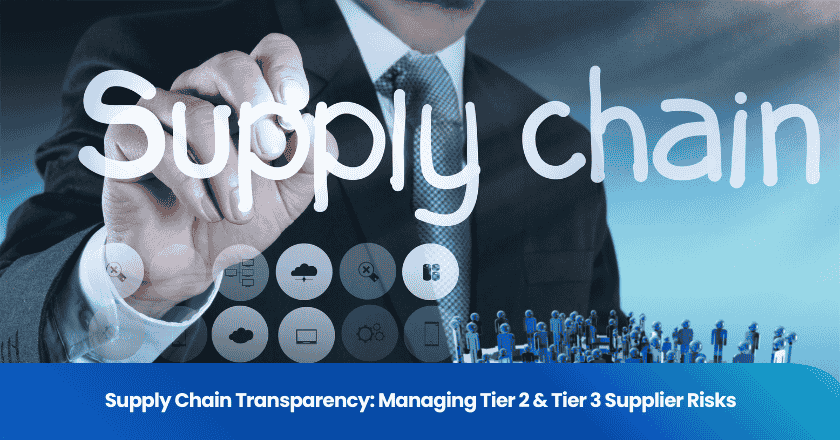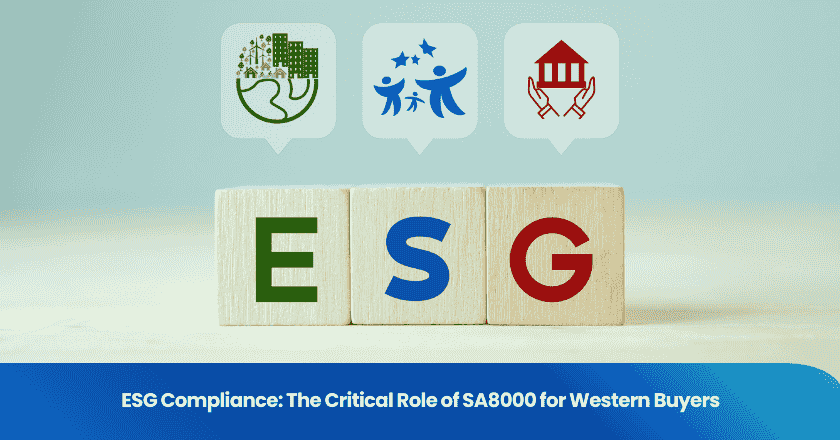
The history of Outsourcing Textile Manufacturing development?
The history of outsourcing textile manufacturing is a story that has been continuously evolving with the progress of globalization and industrialization.
Outsourcing textile manufacturing has experienced significant development over the past few decades. Initially, textile manufacturing was mainly localized production, with countries producing goods for their domestic markets
With the advent of globalization, this pattern began to change. The development history can be roughly divided into the following stages:
Early Stage: Industrial Revolution and Initial Outsourcing Textile Manufacturing
From the end of the 19th century to the beginning of the 20th century, with the advancement of the Industrial Revolution in Western countries, the mechanization and automation of textile manufacturing increased, and production efficiency improved significantly. Some companies began to seek low-cost production sites overseas to reduce production costs. The initial outsourcing textile manufacturing mainly focused on labor-intensive processes such as spinning and weaving.
Mid-term Stage: Globalization and Outsourcing Expansion
From the mid-20th century to the end, with the acceleration of globalization, the barriers to cross-border trade and investment gradually decreased, and outsourcing textile manufacturing became more common. The outsourcing links gradually expanded to more complex manufacturing processes, including design, research and development, and production management. The main destinations for outsourcing were some developing countries, such as certain countries in Asia, which attracted a large amount of outsourcing business due to their low labor costs and relatively well-developed industrial chains. By the end of the 20th century, due to the huge labor force and cost advantages, China became the main center for outsourcing textile manufacturing.
Short-term phase: Information Technology and Outsourcing Optimization
From the beginning of the 21st century to the present, the rapid development of information technology has made outsourcing textile manufacturing more efficient and convenient. Enterprises can achieve close cooperation and real-time monitoring with overseas suppliers through the Internet and advanced communication technologies. Countries such as China, India, Bangladesh, and Vietnam, with their low labor costs and relatively well-developed textile industry chains, have become the main destinations for outsourcing textile manufacturing. The outsourcing model has become more diversified and flexible, including contract manufacturing, joint ventures, strategic alliances, and other forms. At the same time, some high-end textile manufacturing processes have also begun to be included in the scope of outsourcing.
The history of outsourcing textile manufacturing is a process of continuous development and evolution, which has been growing and optimizing with the progress of globalization and industrialization.
Today, outsourcing textile manufacturing has become one of the important strategies for many companies to improve competitiveness, reduce costs, and respond quickly to market changes.
Why is there Outsourcing Textile Manufacturing?
The occurrence of outsourcing textile manufacturing is the result of a combination of various factors, which can be mainly summarized into the following aspects:
1. Cost Savings
Labor Cost: The labor costs in developing countries or regions are usually much lower than those in developed countries, prompting textile manufacturing companies to significantly reduce production costs through outsourcing. Labor cost is one of the main costs in textile manufacturing, and seeking low-cost labor has become one of the main driving forces behind outsourcing. Lower labor costs mean higher profit margins. Which company would not be tempted?
Equipment and maintenance costs: With the improvement of industrial technology, textile equipment is developing towards large-scale, precision, and systematization, and the maintenance and management costs of equipment are also increasing. Some companies may choose to outsource some production processes to reduce the investment and maintenance burden on high-cost equipment.
2. Optimal allocation of resources
The enterprise has limited resources: the enterprise faces resource constraints, including capital, technology, and manpower. By outsourcing non-core business, the enterprise can focus its limited resources on developing core business, such as design, brand building, and marketing, while leaving non-core production to professional suppliers to enhance competitiveness.
Global production network: Globalization enables enterprises to utilize resources worldwide, including raw materials, labor, technology, etc. Textile manufacturing enterprises can build a more flexible and efficient production network through outsourcing, in order to respond to rapidly changing market demands.
3. Market Competition Pressure
Improving efficiency and flexibility: Outsourcing can help companies improve production efficiency and flexibility, enabling them to respond to market changes more quickly. Through outsourcing, companies can adjust production scale and product types according to market demand, reducing inventory costs and risks.
Addressing trade barriers: In some cases, textile manufacturing companies may outsource to circumvent trade barriers and tariff restrictions. For example, some countries may impose high tariffs on imported textiles, and by producing and exporting in countries less affected by tariffs, companies can reduce tariff costs and increase competitiveness.
4. Technology and Innovation Requirements
Technology Transfer and Cooperation: In the outsourcing process, companies may engage in technical exchanges and cooperation with partners undertaking the outsourced business. This helps companies introduce advanced technology and management expertise, enhancing their own technological level and innovation capabilities.
Research and Development and Design Outsourcing: As market competition intensifies, textile manufacturing companies are paying more and more attention to product research and development and design capabilities. Some companies may outsource the research and development and design processes to professional institutions or designers to leverage external forces to enhance product competitiveness.
5. Historical and Institutional Factors
Historical Heritage: outsourcing textile manufacturing can be traced back to the 19th century or even earlier. At that time, with the advancement of the Industrial Revolution and the development of capitalism, the textile industry became one of the pioneer industries for outsourcing. This historical heritage has made outsourcing textile manufacturing have a broad foundation and profound influence worldwide.
Institutional and policy environment: The institutional and policy environment of different countries and regions has a significant impact on outsourcing decisions. Some countries may attract foreign investment and outsourcing business by offering tax incentives, investment subsidies, and other policy measures. The formulation of international trade rules and standards also restricts and guides outsourcing activities.
With the acceleration of globalization and the intensification of market competition, textile manufacturing enterprises need to respond more flexibly to market changes and challenges, optimize resource allocation, and improve production efficiency and competitiveness through strategies such as outsourcing.
What are the potential risks of Outsourcing Textile Manufacturing?
Outsourcing textile manufacturing brings us more advantages, but it also comes with a series of potential risks.
The following is a detailed analysis of these risks:
1. Quality Control Risks
Insufficient capacity of the contractor: Due to the contractor's lack of experience, inadequate technology, or poor management, the quality of the textile products produced may be unstable, and may even fail to meet the standards agreed upon in the contract. This can affect the reputation of the enterprise and may also lead to serious consequences such as customer returns and claims.
Raw material quality control is not strict: In the outsourcing process, the quality control of raw materials is often the responsibility of the contractor. If the contractor is not strict in the procurement and inspection of raw materials, and uses inferior raw materials for production, it will directly affect the quality of the final product.
2. Supply Chain Management Risks
Supply chain disruption: outsourcing textile manufacturing involves multiple links and suppliers, and any mistake in any link may lead to supply chain disruption. For example, insufficient supply of raw materials, transportation delays, production equipment failures, etc. may affect the timely delivery of products.
Strong supplier dependence: The excessive dependence of a company on one or a few suppliers may lead to a concentration of supply chain risks. Once these suppliers encounter problems, the company will face the risk of supply chain disruption.
3. Intellectual Property Risk
Intellectual property leakage: During the outsourcing process, the company's design drawings, production processes and other core technical information may be leaked to the contractor or its employees. If the contractor fails to properly keep these materials or use them for its own production, it will infringe the intellectual property rights of the company.
Infringement Risk: The contractor may use the company's trademarks, patents, and other intellectual property rights for production or sales activities without the company's permission, which may lead to infringement disputes.
4. Financial Risk
Cost overrun: Due to factors such as outsourcing price fluctuations, rising raw material prices, etc., the actual outsourcing cost may exceed the budget range. In addition, if the contractor encounters quality issues during the production process that require rework or re-production, it will also increase the financial burden on the company.
Collection risk: In outsourcing textile manufacturing partnerships, companies may face the risk of delayed or failed payments from the contractor. This not only affects the speed of the company's capital return but may also adversely affect the normal operation of the company.
5. Legal Compliance Risks
Compliance with laws and regulations: There are differences in labor laws, environmental regulations, etc. between different countries and regions. If the contractor fails to comply with local laws and regulations in production activities, it may lead to legal risks such as lawsuits and fines for the company.
Contract breach risk: Outsourcing contracts are the foundation of cooperation between both parties. If the contractor violates the contract by failing to deliver products on time, providing qualified products, etc., it will constitute a breach of contract. The enterprise needs to bear the resulting liability for breach of contract and losses.
6. Other Risks
Cultural Conflicts: There are cultural differences and language barriers between different countries and regions. This may lead to misunderstandings and poor communication during the outsourcing cooperation process, affecting the effectiveness of the cooperation.
Technological update risk: With the continuous development and upgrading of textile technology, if the enterprise fails to grasp the new technology in time and apply it to outsourcing textile manufacturing, it may lead to a decline in product competitiveness or even be eliminated.
Outsourcing textile manufacturing involves multiple links and participants, and its potential risks cannot be ignored. Enterprises need to strengthen risk management awareness during the outsourcing process and formulate comprehensive risk prevention measures to reduce the impact of potential risks on enterprise operations.
How to efficiently complete Outsourcing Textile Manufacturing?
In the previous article, we mentioned some advantages and potential risks. So how can we efficiently complete outsourcing textile manufacturing? What are the specific processes? What are the key steps? We hope the following content can bring some help to everyone.
Efficiently completing outsourcing textile manufacturing requires a series of carefully planned and executed steps.
Here are some key elements and strategies to ensure that the process of outsourcing textile manufacturing goes smoothly and achieves the expected goals:
1. Clarify the objectives and detailed requirements of Outsourcing Textile Manufacturing
Detailed planning: Before starting outsourcing textile manufacturing, the company needs to clarify the specific goals, needs, and expected outcomes of the outsourcing. This includes determining which production links need to be outsourced, expected quality standards, delivery deadlines, cost budgets, and so on.
Demand Assessment: Evaluate the company's own production capacity and resource status to determine the necessity and feasibility of outsourcing textile manufacturing.
2. Review and select suitable suppliers
Supplier evaluation: Conduct a comprehensive evaluation of outsourcing suppliers, including production capacity, technical strength, quality control system, financial status, and historical performance. Ensure that suppliers can meet the specific needs and standards of the enterprise.
Field visit: If conditions permit, conduct a field visit to more intuitively understand the supplier's production environment and actual operation.
Contract formulation: Sign a detailed outsourcing contract with the selected supplier, clearly covering all aspects of the manufacturing process, including quality standards, delivery schedules, payment methods, and key terms such as liability for breach of contract, to ensure smooth cooperation.
3. Establish an effective communication mechanism
Regular Communication: Establish a regular communication mechanism with suppliers to timely understand production progress, quality issues, and potential risks. This helps companies take timely measures to solve problems and adjust production plans.
Information sharing: Ensure smooth and unimpeded information sharing between enterprises and suppliers. Enterprises can provide necessary technical drawings, production plans, quality standards and other information to help suppliers better understand the needs of the enterprise.
4. Strictly monitor the production process
Quality Control: Strictly monitor the outsourcing textile manufacturing process to ensure that suppliers produce according to the quality standards and requirements agreed upon in the contract. Companies can send quality inspectors to the supplier's site for spot checks or full inspections to ensure that product quality meets the requirements.
Progress Tracking: Closely monitor the production progress to ensure that suppliers can deliver on time. Companies can work with suppliers to develop detailed production plans and schedules, and track the production progress in real time to ensure smooth implementation of the plan.
5. Optimize Supply Chain Management
Supply Chain Management: Strengthen the management and optimization of outsourcing textile manufacturing supply chain, ensure sufficient supply of raw materials with reliable quality and smooth logistics, and reduce supply chain risks. Enterprises can work with suppliers to develop supply chain management strategies to reduce costs and improve efficiency.
Risk management: Identify and assess potential risks in the outsourcing process, such as supplier bankruptcy, substandard quality, etc., and formulate corresponding measures to reduce the impact of risks on the enterprise.
6. Continuous evaluation and improvement
Performance evaluation: Regularly evaluate the performance of suppliers, including product quality, delivery time, service attitude, etc. Based on the evaluation results, reward or punish suppliers or adjust cooperation strategies to ensure that outsourcing cooperation always remains efficient and high-quality.
Continuous improvement: Establish long-term cooperative relationships with suppliers, and work together to continuously improve production processes and product quality. Enterprises can provide technical support and training to help suppliers improve production capacity and technical level, and encourage common growth and innovation.
7. Pay attention to intellectual property protection
Confidentiality Agreement: Sign a confidentiality agreement with suppliers to ensure that the company's intellectual property and trade secrets are properly protected. This helps prevent the occurrence of technology leakage and infringement risks。
Grow your business with TradeAider Service
Click the button below to directly enter the TradeAider Service System. The simple steps from booking and payment to receiving reports are easy to operate.



